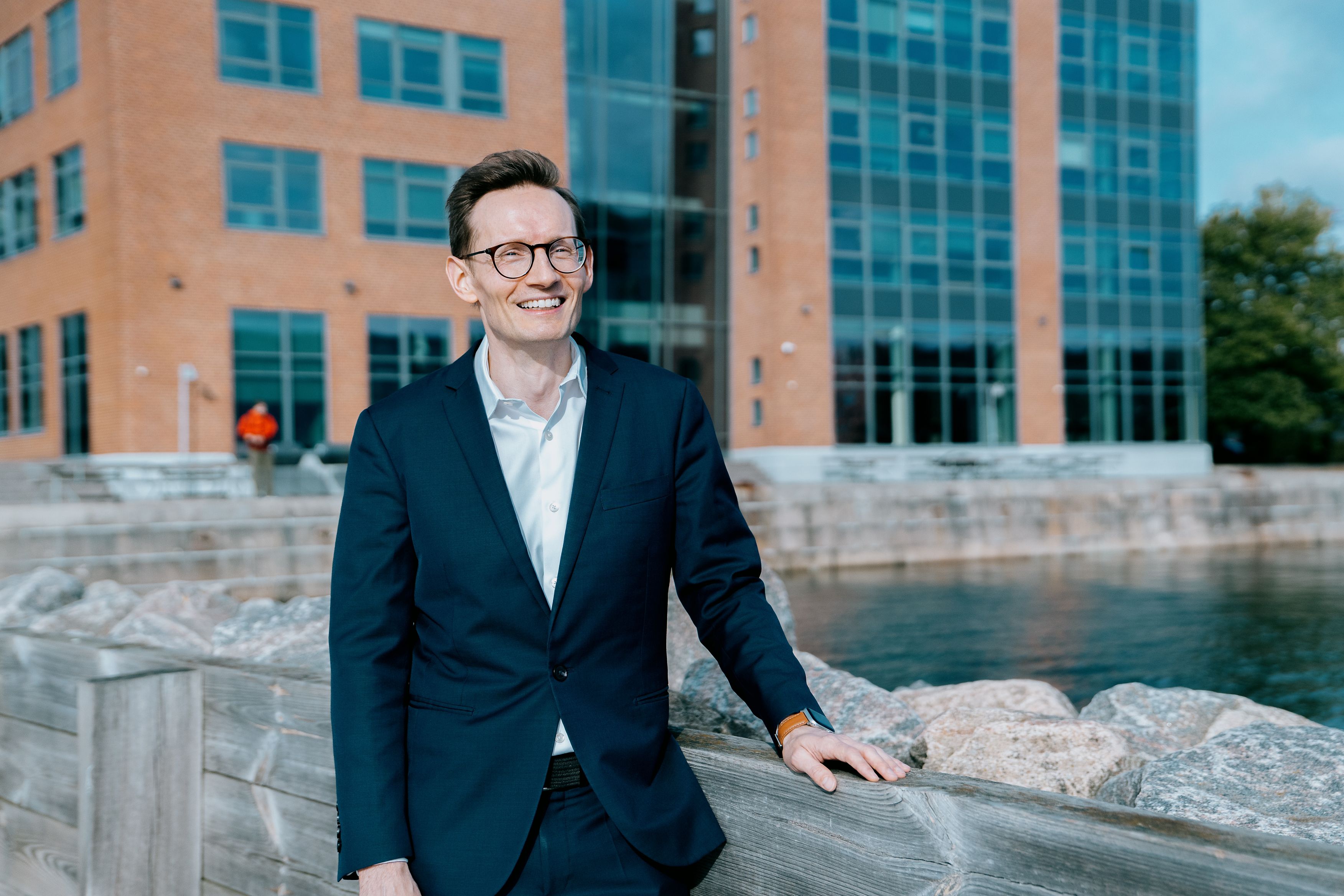According to Gartner, nearly 40% of large companies are expected to create quantum-computing initiatives by 2025. But what is quantum? Why is it important? And why should we all be excited by it?
To answer these questions, we spoke with Troels Steenstrup Jensen, Director at KPMG Denmark and Head of KPMG’s Global Quantum Hub, a self-confessed maths fanatic who’s bringing his love of “fast-paced problem solving” to us at KPMG and our clients around the world.
How can you get more and more out of less and less? The smaller computers get, the more powerful they seem to be. Yet despite enormous advances in computing technology in recent decades, many problems are still too complex, too large for the computers we know to ever solve them.
Classic computers – even modern day ‘supercomputers’ – are based on binary code and rely on 20th century transistor technology to process information. They work in a linear way with finite capacity meaning that big problems can take extraordinarily long periods of time to solve (if they can at all).
Enter quantum computing, a rapidly evolving field of computing based on quantum theory, the branch of physics that deals with atoms and subatomic particles.
“Nature behaves strangely when you go down to the atomic level,” Troels explains. “It doesn’t play by the same laws as in our everyday life.”
Quantum technologies exploit phenomena in quantum mechanics to enable calculations in radically different ways to classic computers. Unlike with binary code, quantum computers can store information in a multidimensional state – where a ‘qubit’ (rather than a classic ‘bit’) can be zero, one, zero and one at once, or any of an infinite range of numbers in between. This multiplicity allows quantum computers to process vast numbers of possibilities simultaneously and extract potential solutions significantly faster than before.
Exponential potential
“This is the first time since the invention of the transistor that we’re getting new hardware to run computers that is completely different,” Troels says.
Previously we just added more transistors to make things work a bit quicker. Quantum computers are a whole new breed that can do things exponentially faster and more efficiently than a classical computer. Something that might have taken 2 million years to calculate, can now be done in 2 minutes. That’s the sort of scale we’re talking about.
Quantum computing isn’t the most accessible of subjects, even Troels can admit that. But its potential as a problem solving, calculation technology is significantly more exciting – and relevant – than people might give it credit for.
In security, for example, Troels believes quantum represents the biggest shake-up of digital infrastructure and cybersecurity we’ve ever seen – creating both a huge opportunity for protecting information more effectively, and a challenge for companies which will see its classic technology made obsolete.
In banking, telecommunications and other industries carrying sensitive, confidential data, quantum computing is playing a key role in securing data infrastructure and accelerating risk calculations, giving the institutions that embrace it a real competitive advantage over others. And in logistics more immediately accessible ‘quantum inspired optimization’ (where quantum calculations are simulated on classic hardware) is helping to revolutionize logistical challenges such as vehicle routing plans.


Beauty is in the eye of the problem solver
Not many people would describe an algorithm as “beautiful” – but for Troels, with his PhD in quantum mathematics, rules for calculation and problem solving hold a special place in his heart.
“I’m fascinated by algorithmic complexity,” he explains, “There’s something about seeing a computer break a problem 100,000 times faster than you if you tried to implement it yourself.”
It’s a passion that’s been 20-plus-years in the making – since Troels’ introduction to quantum algorithms while studying at the University of Southern Denmark.
It was a pivotal moment for me, seeing these algorithms for the first time; very beautiful algorithms which can help to solve complex problems in ways that couldn’t previously be done. Of course, back then (the mid-2000s), the technology was not accessible, the applications were limited. Now, quantum computers are opening a new and exciting space for us to explore as problem solvers.
After some time working as a risk analyst at Danske Bank, Troels joined KPMG Denmark in 2016, initially in our finance team, bringing knowledge of data science as well as complex mathematics.
Within a year, this evolved into a role in our NewTech team, where Troels and others were able to experiment with a growing appetite for emerging technology, including machine learning, which Troels also heads up here in Denmark in addition to his work on quantum.
Spreading the love
A big part of Troels’ role is in upskilling others in KPMG, helping our people to understand the technology, its applications, and implications, so that the organisational knowledge of quantum can meet the growing demands of our clients:
I love education. Getting the story out, communicating something complex in a way people can understand and relate to. We have 265,000 people employed globally so it’s a big audience, but we are targeting key groups as we go and building up our community on Teams and on calls.
In July, KPMG officially joined IBM’s Quantum Network – a worldwide collective working together to shape the future of an exciting and mysterious new technology. IBM is leading the world in quantum computing hardware and software, so there’s no better alliance to help move the technology forward.
While quantum computing is still in its early-stage development, it’s clear that its potential impact can be profound and wide-ranging. For Troels and his growing network of specialists and enthusiasts it’s exciting to be among those pioneers in the industry seeing just what it’s capable of.
Troels Steenstrup Jensen
Director, NextGen Operations
KPMG in Denmark



